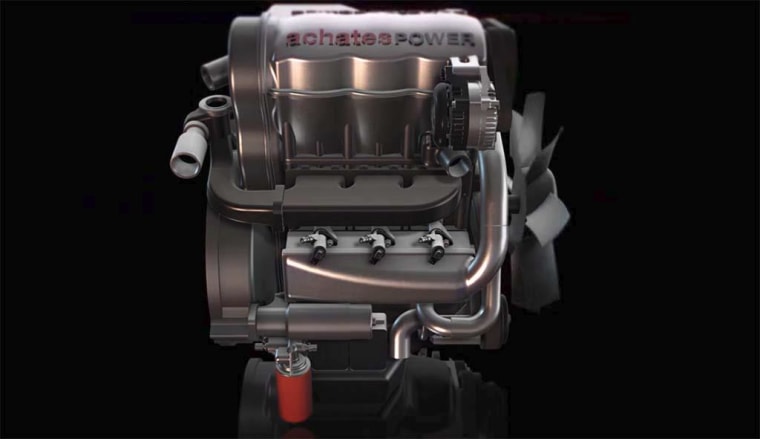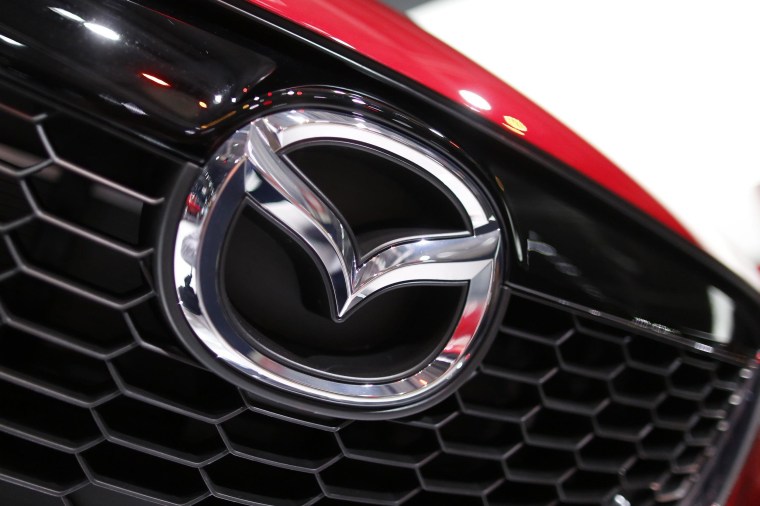Half a dozen countries, including the U.K. and possibly also Germany, have now laid out plans to ban gas- and diesel-powered vehicles, while tough U.S. and Chinese emissions and mileage standards are expected to boost sales of plug-based vehicles substantially over the coming decade.
Yet, to mangle an old quote by Mark Twain, reports of the demise of the internal combustion engine appear to be greatly exaggerated.
Mazda just announced a breakthrough engine, dubbed the Skyactiv-X, that could yield hybrid-level mileage out of a gasoline engine. And a variety of other new internal combustion engine technologies could give battery power a real challenge in the coming years, according to industry experts.

“There are a lot of reasons the internal combustion engine may stick around,” said Larry Mihalko, the director of performance engineering for General Motors’ Chevrolet division. “You should never count it out. It’s continuing to get more efficient.”
More Efficient SUVs
One example is the new 2018 Chevy Traverse SUV, he said. Despite having room for seven passengers and plenty of room for cargo, while also making 362 horsepower, the big ute can manage up to 27 miles per gallon on the highway. A few years ago, that sort of number was accomplished only by the smallest, stripped-down econocars.
Credit a variety of steps that have allowed automakers to achieve the seemingly incompatible goals of boosting performance, increasing fuel economy, and sharply lowering emissions:
- Direct injection replaces older methods of pumping fuel and air into the engine, dramatically improving efficiency
- Stop/Start systems briefly shut off the engine instead of idling at, say, a stoplight, instantly starting back up when the driver’s foot lifts off the brake
- New eight, nine, and 10-speed transmissions keep the engine operating at its most efficient speed, reducing energy losses
- Turbo and superchargers allow small engines to operate like big ones when there’s a demand for power. Otherwise, they deliver the fuel economy of downsized engines.
And even more dramatic breakthroughs are coming. The Mazda Skyactiv-X engine is just the latest example. Technically, it’s called a homogeneous charge compression ignition, or HCCI, engine, and it essentially blends some of the best attributes of both gasoline and diesel technologies.
Related: Volvo Is First Automaker to Offer All Electric or Hybrid
While it runs on gasoline, the Skyactiv-X normally uses high compression, rather than a spark to ignite the air/fuel mixture in its cylinders. There are spark plugs, but they are only used until the engine warms up, much like conventional diesels use glow plugs when the engine is cold.
This approach is estimated to achieve fuel savings of as much as 30 percent when compared to a more traditional gasoline engine. That would make the Skyactiv-X potentially as efficient as a diesel and even some gas-electric hybrids.
"We think it is an imperative and fundamental job for us to pursue the ideal internal combustion engine," Mazda R&D head Kiyoshi Fujiwara told reporters in Japan last week. "Electrification is necessary but,” he added, “the internal combustion engine should come first."
Pistons that Pack a Punch
Mazda isn’t the only automaker promising a major engine breakthrough. Nissan’s Infiniti division is getting ready to go into production with its Variable-Compression Turbo engine. A concept many manufacturers have toyed with over the decades, the 2.0-liter gas engine can adjust its compression ratio anywhere from 8:1, for performance, to 14:1, for better fuel efficiency.
“This new technology will be available in new Infiniti models from 2018,” Infiniti President Roland Krueger said while introducing the Variable-Compression Engine at the Paris Motor Show last fall.
Even more radical technologies could pump more life into the internal combustion engine. San Diego-based Achates Power is working up an approach known as the opposed-piston engine which “will be 50 percent more efficient than the leading gas turbocharged direct-injection engine on the market today,” according to Dave Johnson, a former Ford engineer who now serves as Achates CEO.

Think of two boxers alternating punches and you have the basic idea behind the opposed-piston engine which, at first glance, looks a lot like today’s gas engine. That’s entirely intentional, said Johnson, because Achates wants to be able to build its new powertrain in current engine plants and use it in today’s cars.
At least seven major automakers are testing the Achates technology, the company hints, and could bring it to market in a few years. Several manufacturers have privately confirmed interest, though none would offer their own timetable.
Related: The Electric Car Revolution May Come Sooner Than We Thought
What’s clear is that, “older technologies tend to achieve their most dramatic breakthroughs when they’re being threatened by new technologies,” said David Cole, director-emeritus of the Center for Automotive Research, in Ann Arbor, Michigan.
Improvements in gas and diesel engines could make it difficult to justify going electric, or at least all-electric, Cole and other analysts caution, at least without some breakthroughs on the battery front that significantly improve range and performance while sharply lowering costs and charging times.
In the end, consumers are likely to win, either way.
